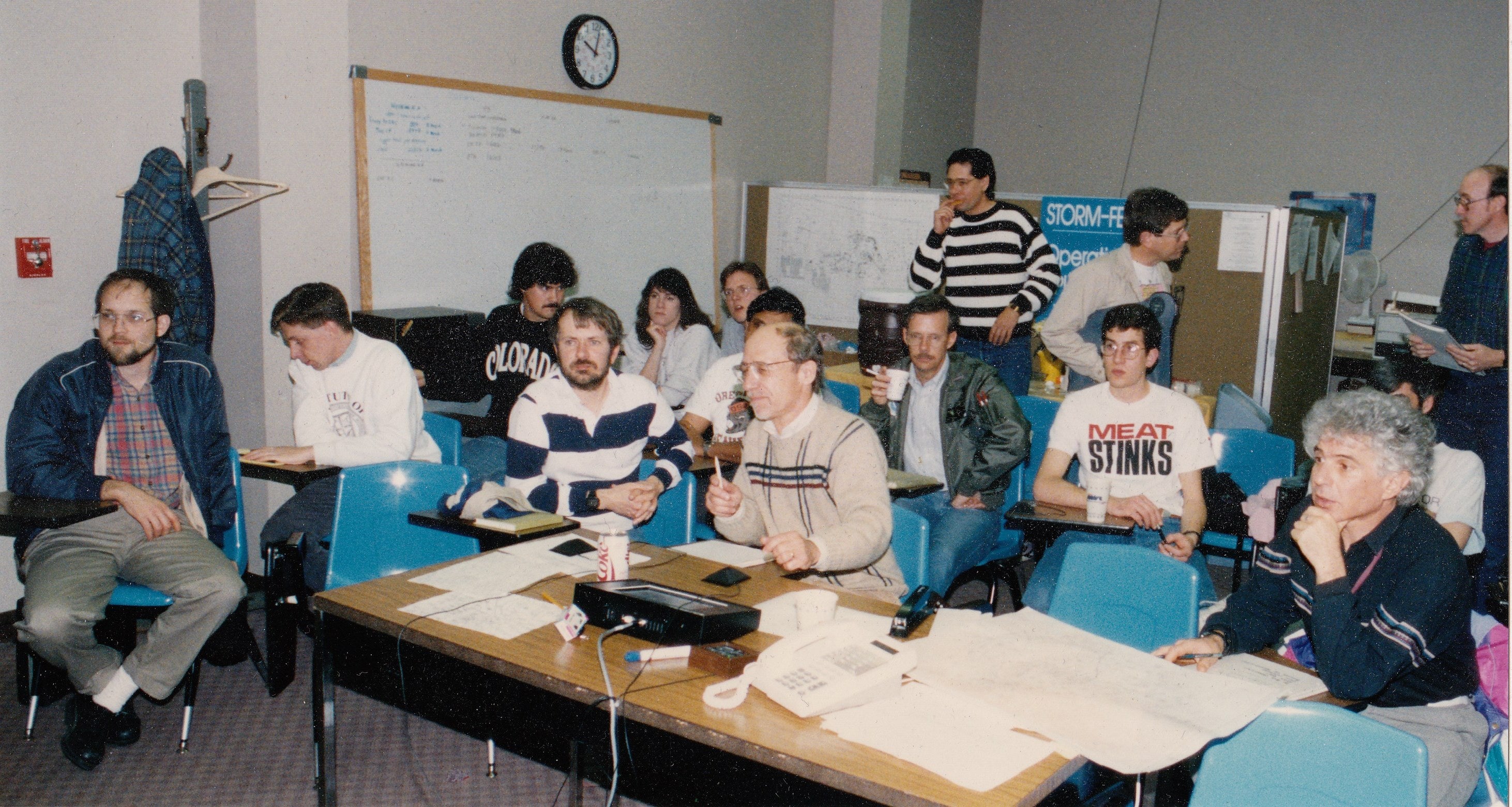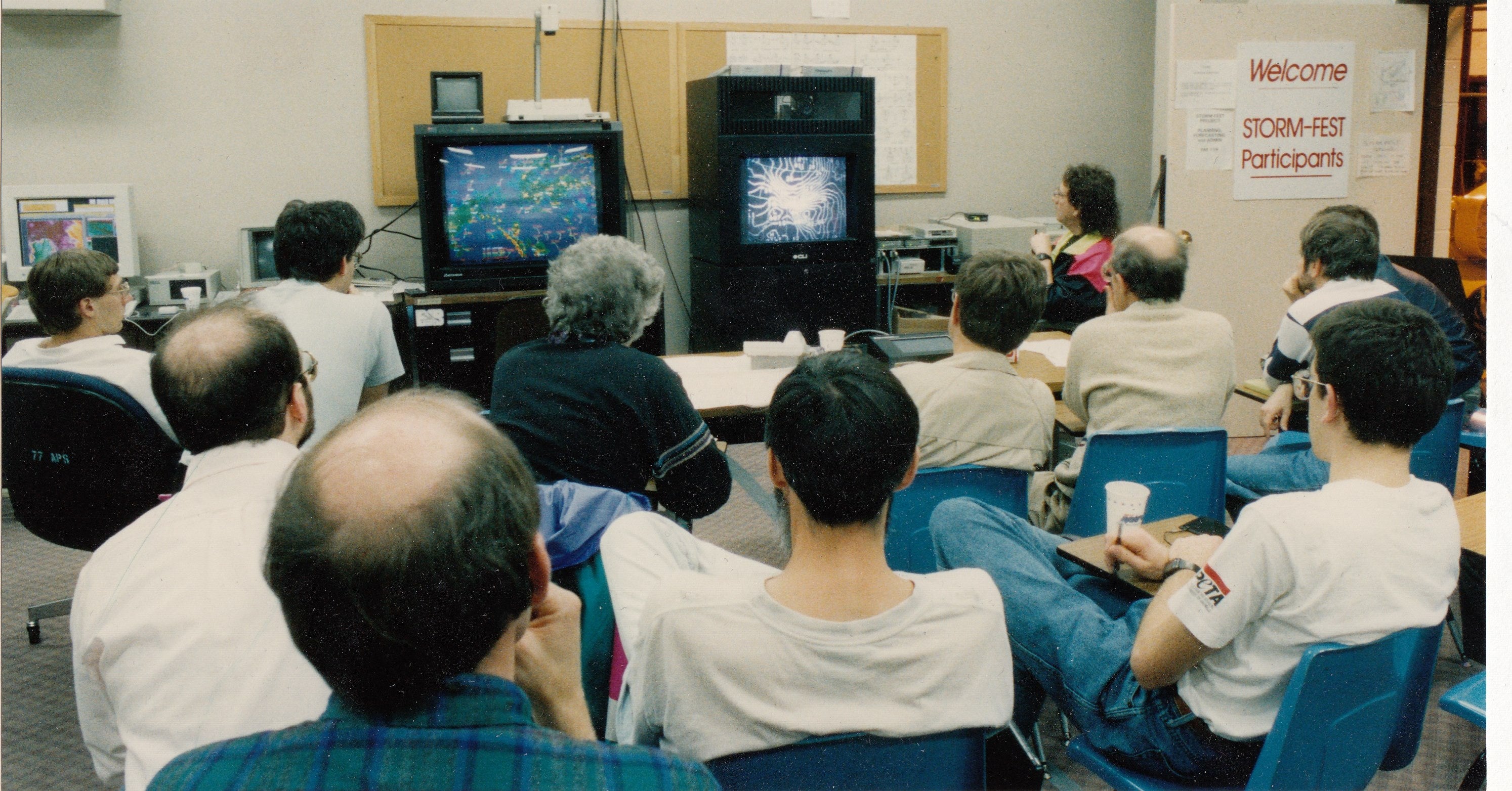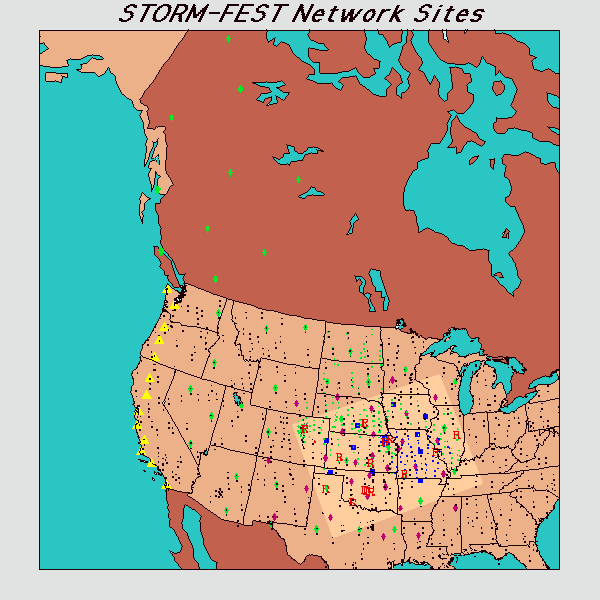STORM-FEST
USWRP/STORM Fronts Experiment Systems Test
The STORM Fronts Experiment Systems Test (STORM-FEST) investigated the structure and evolution of fronts, embedded precipitation and associated mesoscale phenomena in winter storms over the Central United States. The field phase of STORM-FEST was from 1 February through 15 March 1992. This field effort provided the research background for the major Winter/Spring Multiscale Field Experiment planned for the mid-to-late 1990s and provided the experience with new observational systems and other U.S. Weather Research Program (formerly called the STORM Program) elements (4DDA, numerical modeling, data management, etc.) needed to insure success of other field experiments planned as part of the U.S. Weather Research Program. The field phase of STORM-FEST was composed of three closely related components:
- A sharply focused investigation of the structures and evolutions of fronts and associated mesoscale phenomena in the central United States, with an emphasis on precipitation and severe weather (referred to as "Frontal and Mesoscale Studies")
- A research assessment of new operational and research meteorological instrumentation, facilities, "composite" observational networks and other STORM elements (referred to as "Systems Tests")
- A study to begin to understand mesoscale prediction capabilities and limitations in active frontal regions (referred to as "Weather Prediction Studies")
There was nearly complete overlap in the observational requirements to meet the objectives in each of these three components. The frontal and mesoscale studies required data over the same time period and spatial scales as that required for making and verifying weather forecasts. The new observational systems will be evaluated on the basis of their contributions toward understanding mesoscale processes and helping to make and verify weather predictions. Similarly, the research assessment of new observing systems also required detailed measurements on the mesoscale as needed for the frontal and mesoscale studies.
 |
 |
All photos copyright University Corporation for Atmospheric Research unless otherwise noted.
Principal Investigators:
- Carl Kreitzberg
- James W. Telford
- Margaret A. LeMone
Project Manager:
- Vince Glover
Data Manager:
- EOL Archive NCAR/EOL/DMS
